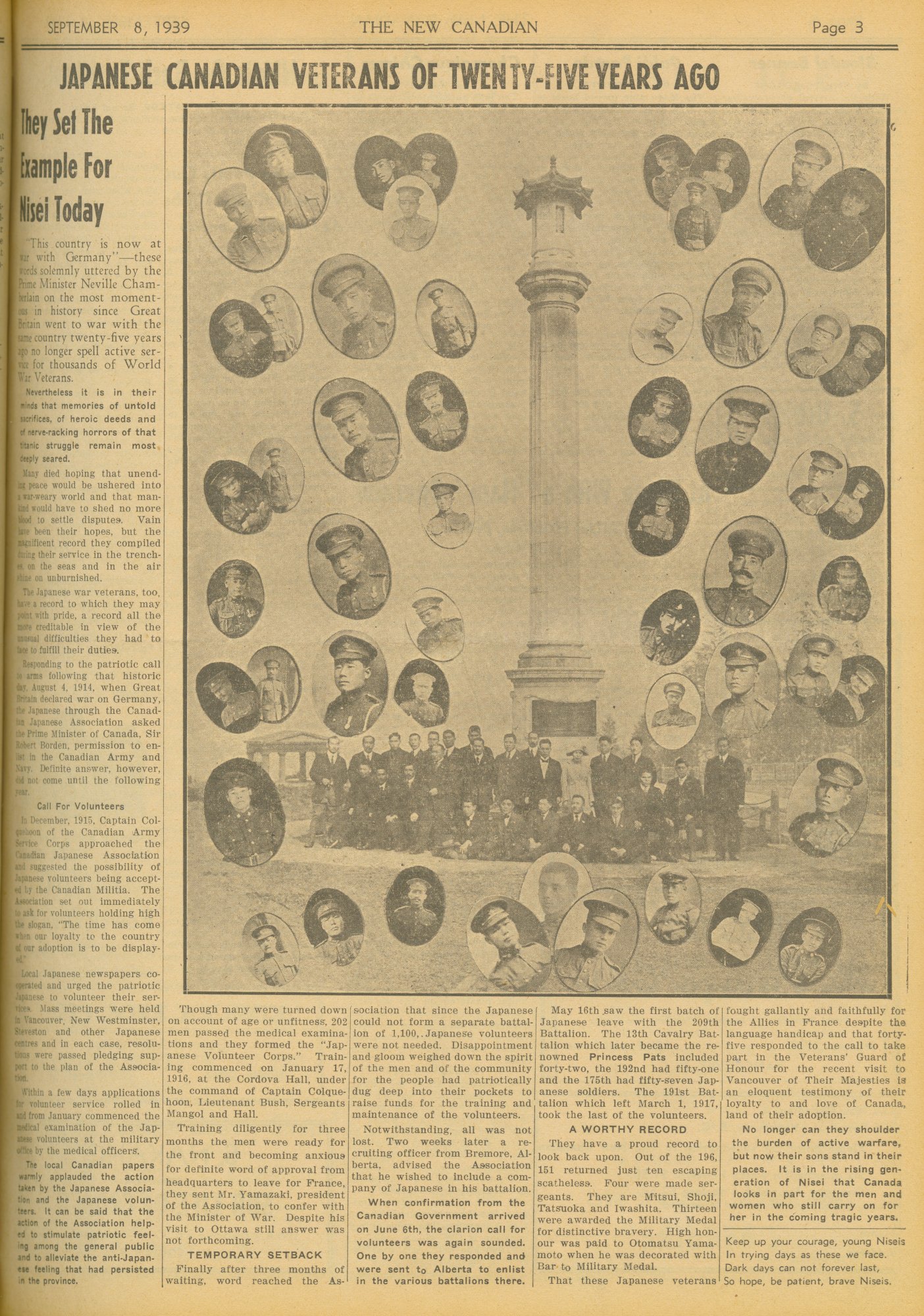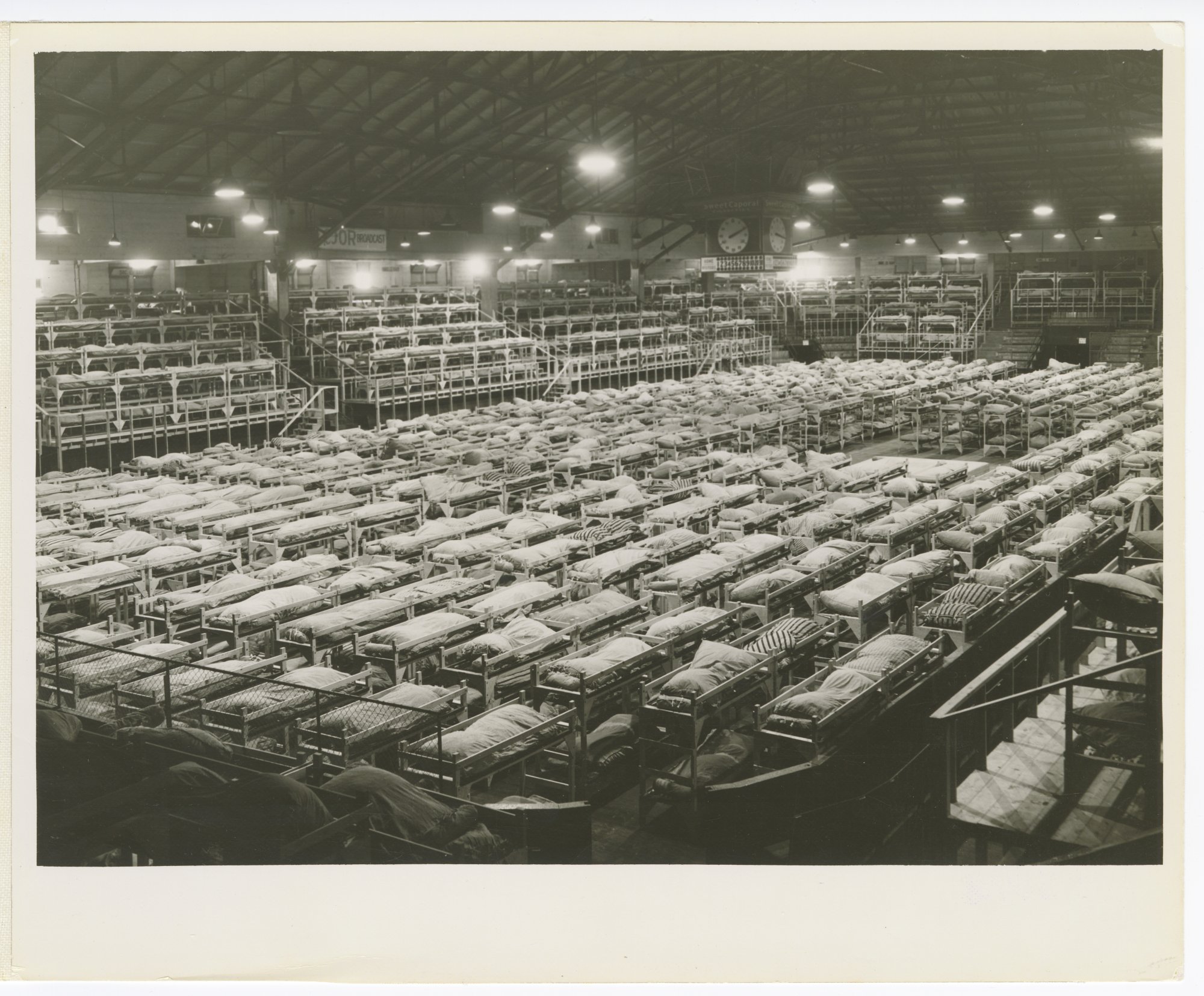In 1939, when Canada declared war against Germany, the New Canadian newspaper devoted a full page covering the issei who had fought for Canada during the First World War. Nisei were reminded of the sacrifices made, including the 54 who did not return (The New Canadian, September 8, 1939)”.
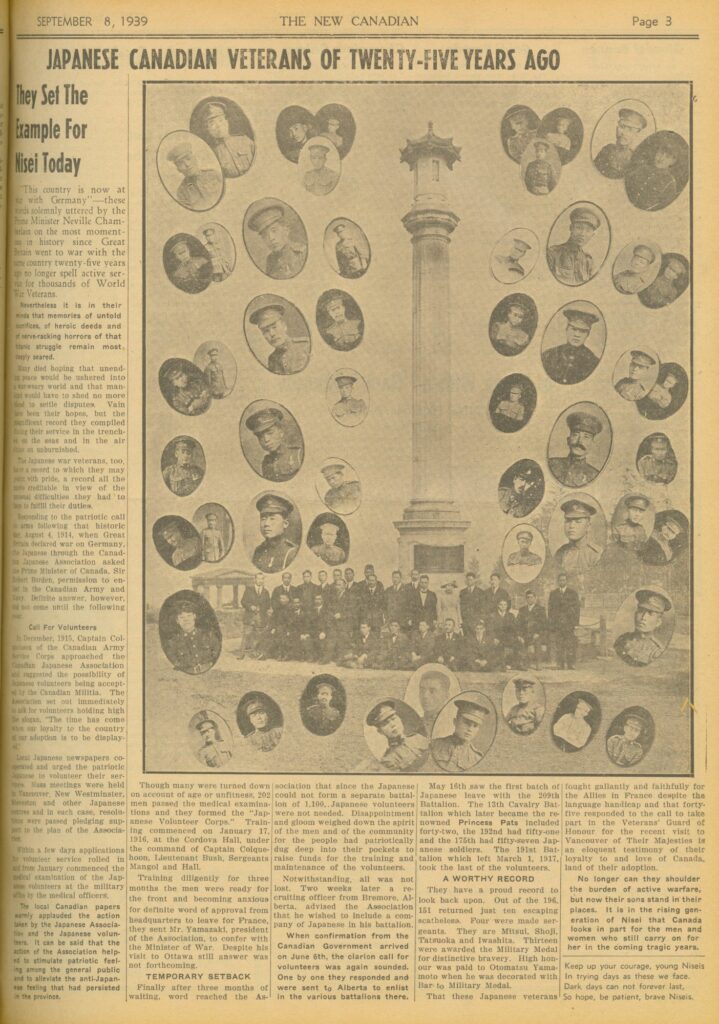
All 45 members of Vancouver’s Canadian Legion Japanese Branch #9 offered their services for home guard duty during wartime (The New Canadian, April 15, 1939).
The Japanese Canadian Citizens League sent a telegram to Prime Minister Mackenzie King that pledged loyalty and offered the services of all Japanese Canadians to the war effort (Ito, 1984, p. 107). The nisei had the chance to serve their country as the issei had in the First World War, and to prove that they were loyal Canadians. A New Canadian editorial urged nisei to ignore the prejudice, restrictions and denial of rights, and attacks on their character and loyalty, to “assume our burden and fulfill our part…for the sake of future generations (The New Canadian, September 8, 1939)”.
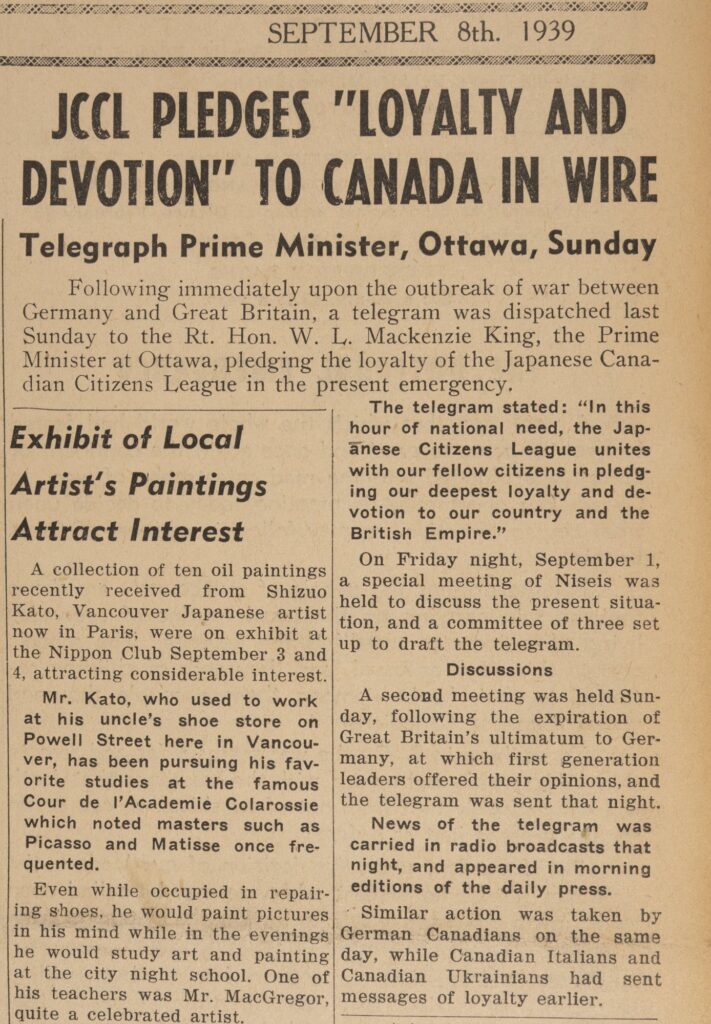
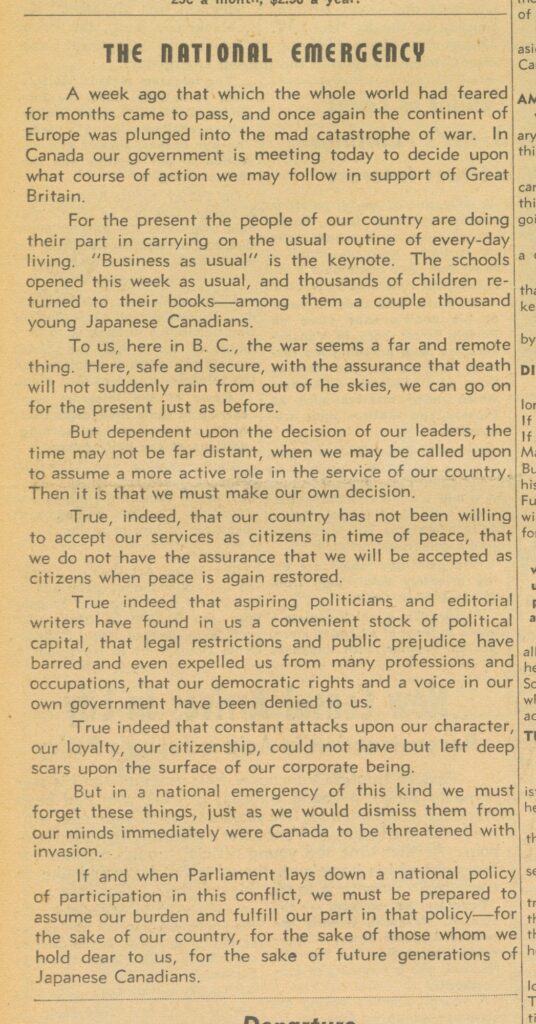
J.S. Woodsworth, leader of the Co-operative Commonwealth Federation party (CCF, precursor to the New Democratic Party), said in the House of Commons, responding to their offer: “I would have been almost ashamed, had I been Prime Minister, to read a telegram from the Japanese Canadians pledging their loyalty, when we refuse to Canadian-born Japanese the same treatment that we give to other Canadians (Adachi, 1976, p.188)”.
Roy Matsui recalled some of his non-Japanese friends in Vancouver becoming increasingly unfriendly as the war progressed.
On September 2, a goodwill flight was made by a Japanese plane, the Nippon, over Vancouver. It was making the longest round-the-world flight at the time. The commander of the Royal Canadian Air Force Western Command tried to discourage the flyover, claiming it was intended to stir up patriotism among issei and to remind the Japanese in Canada of Japan’s air power (Ito, 1984, p. 106).
In the summer of 1940, Commissioner Mead of the RCMP observed that Canada would likely experience more anti-Japanese activity than Japanese activity against it (Theurer and Oue, 2021, p. 120).
Alderman Halford Wilson, on the other hand, warned that highly trained Japanese soldiers could mass along the west coast, causing “trouble and possible disaster (Theurer and Oue, 2021, p. 120)”.

Canada began a War Loan Drive in 1940, which was supported by Japanese communities in BC. By the summer of 1941, $340,000 had been raised (Adachi, 1976, p. 188) to support Canada’s war effort. In March 1942, the amount raised by the Japanese community for that year had already reached $310,000.
The intelligence branch of the Royal Canadian Air Force, Western, Command issued a report in June 1941 on the Japanese problem in British Columbia. It was concerned about war starting in the Pacific. The report was full of pessimism and exaggerated warnings about the behaviour of the nikkei in British Columbia, with no evidence supplied. The report also made no mention of the virulent anti-Japanese attitudes that had been building up for years in Canada.
“It seems reasonably certain that Hitler has promised British Columbia to the Japanese when the time comes to carve up Canada…
“In the Prince Rupert-Skeena River area the Japanese were for a time cocky with the increasing German successes. Of late this cockiness has died down in proportion to the increase of construction of forts and bases and other defence preparations there”.
One part of this report was implemented later that year, when Japanese forces attacked Pearl Harbor – the report had recommended that 50 “agitators and suspected leaders” from the Japanese community in British Columbia be interned at the declaration of war (Ito, 1994, p. 214).

